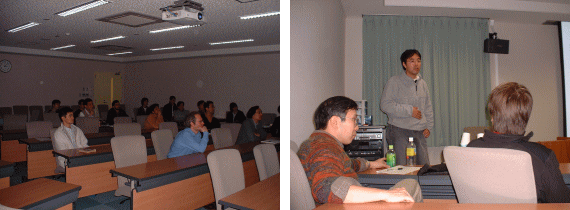
It is generally accepted that the mantle plumes play an important role
in aggregation and breakup of a supercontinent. However the timing and
the location of mantle plume (or superplume) activities within the supercontinent
cycle are still controversial. As suggested by Gurnis (1988), a large continent
affects the thermal state of the mantle. Because the continent can work
as a thermal insulator for the underlying mantle, a thermal upwelling may
be generated beneath the continent, and as a result it causes the breakup
of the supercontinent. However, the observed life time of supercontinents
is shorter than that expected in the numerical model (Condie, 1988). Alternatively,
slab avalanche model has been proposed to resolve this paradox. For instance,
Maruyama (1994) suggested that subducted slabs around the supercontinent
stagnate at and pile up on the 660km phase change. When an avalanche occurs,
a large volume of the cold materials rapidly descends to the bottom of
the mantle. As a part of the return flow, a broad upwelling are generated
and it breakups the supercontinent. However, this model also has a problem
as for the location of the upwelling; there is no plausible consequence
for the induced upwelling to emanate at the central region of the supercontinent.
Here, based on laboratory fluid experiments, we will argue the causal relationship
between generation of mantle plumes and supercontinent cycle from aggregation
to breakup. We will propose an alternative causal relationship: a rising
plume causes aggregation of continents.
お問い合わせ先: irifune@dpc.ehime-u.ac.jp TEL 089-927-9645
詳細情報:http://www.ehime-u.ac.jp/~grc/
主催:愛媛大学地球深部ダイナミクス研究センター